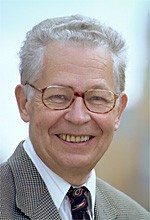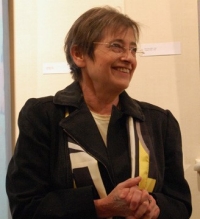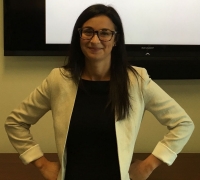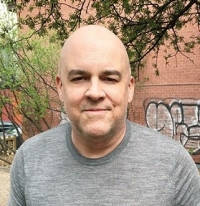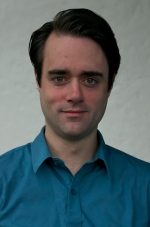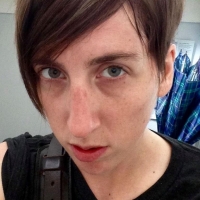Barbara Clausen (2010-11)
Barbara Clausen received her PhD in Art History from the University of Vienna Austria on Performance: Documents Between Action and Spectator. Babette Mangolte and the Historization of Performance Art. She is an art historian working and living in Vienna and Montreal and teaches in the Art History department at UQAM. As a Visiting Research Fellow at the Gail and Stephen A. Jarislowsky Institute for Studies in Canadian Art she was investigating the history as well as the national and international significance of performance artists (Françoise Sullivan, Vera Frenkel, Suzy Lake, or Joyce Wieland a.o.), as well as collective artist initiatives and spaces that are committed to critical and performative practices in the arts (La Central Powerhouse in Montreal, Fado Performance Art Center in Toronto, or the Western Front in Vancouver), in Canada since the 1960s. Clausen is specifically interested in researching how political events and social movements of the past, such as the Quiet Revolution in Quebec and the Feminist Movement throughout Canada, have influenced the reception, history, institutionalization and establishment of performance art.
Rebecca Duclos (2009-11)
Rebecca Duclos received her PhD in Art History and Visual Culture from the University of Manchester (United Kingdom). She studied in Canada for her MA in Museum Studies (University of Toronto), B.Ed. in Art Education (York University), and BA in Classical Studies and Near Eastern Archaeology (University of Toronto). Duclos is a past fellow of the American Association of University Women, the Cultural Theory Institute and the Centre for Museology at the University of Manchester (UK), as well as participating in the 2004 dissertation workshop at the Getty Research Institute. She has recently curated Manchester Letheriumat Cornerhouse in Manchester (UK), Voir/Noir at the Musée d’art de Joliette, As Much as Possible Given the Time and Space Allotted with David K. Ross at the Leonard and Bina Ellen Art Gallery, and Magnify with Lauren Fensterstock at the ICA in the Maine College of Art. She is currently the Dean of Graduate Studies at the School of the Art Institute of Chicago.
Stephen Horne (2011-12)
Born in Nairobi in 1948, Horne studied philosophy and fine arts at the University of Victoria, SFU in Vancouver and York University in Toronto. Stephen Horne now lives in Montreal, Quebec and France and was a professor in media arts at NSCAD University in Halifax 1979-2005. His reviews and essays are published in journals, anthologies and catalogues in Canada, Europe and Asia. His book, Abandon Building: Selected Writings, was published by Eleven Press in 2006. In 2010, a curatorial projectPourquoi Photogenique? (Emanuel Licha) was presented at the SBC Gallery in Montreal.
Gilles Lapointe (2008-09)
Gilles Lapointe is a professor in the Department of Art History at UQAM. He has a PhD (2004) and an MA (1981) in Études françaises from the Université de Montréeal. His work reflects theorical issues related to Quebec’s artistic modernity in an interdisciplinary perspective. His current research projects include an intellectual biography of the multidisciplinary artist Edmund Alleyn and a study of aesthetic and intertextual relations between Réjean Ducharme and Arthur Rimbaud. He is the author ofL’Envol des signes. Borduas et ses Lettres (1996), Edmund Alleyn. Indigo sur tous les tons (éditions du passage) (2005) in collaboration with Jocelyn Jean and Ginette Michaud, and La Comète automatiste (2008). Lapointe's publication, L'envol des signes. Borduas et ses lettres (1996), received the Gabrielle-Roy Prize from The Association for Canadian and Québec Literatures (1996) and the Prix Victor-Barbeau from the Académie des lettres du Québec (1997).
Monique Nadeau-Saumier (2007-09)
Monique Nadeau-Saumier has an MA in art history from Concordia University, an MA in museology from the Université de Montréal and a PhD in Art History from UQAM. She has taught at Bishop’s University and was also the Administrative Director of its Eastern Townships Research Centre. She has also worked at many museums including the Musée de la civilisation du Québec and the Musée national des beaux-arts du Québec. She has organized a number of exhibitions including, Louis Muhlstock for the Musée du Québec (1995), collaborated on Frederick S. Coburn at the Musée des beaux-arts de Sherbrooke (1996) and she organized the presentation, Riopelle et autres Maîtres québécois de la Collection de l’Université de Sherbrooke – Cinquante ans de mécénat (2004).
Jan Noel (2006-07)
Jan Noel is an associate professor of Canadian History and Gender Studies at the University of Toronto. Noel was the Winner of the Canadian Historical Association's John A. Macdonald Prize for her book Canada Dry : Temperance Crusade before Confederation. Her publications include the much-reprinted New France: Les Femmes Favorisées, the Canadian Historical Association Booklet Women in New France, and over thirty articles in books, encyclopedias and journals. In 2012 Professor Noel published Along a River: The First French Canadian Women. Her institute Fellowship facilitated gathering and analyzing visual material to enhance Professor Noel's writing as well as her teaching.
Rosa Schulenburg (2001)
Born in Germany, where she received her M.A. and PhD in Art History from the University of Heidelberg, Dr. Schulenburg was the Institute's first international Research Fellow. During her one-year tenure in 2001, Dr. Schulenburg pursued her interest in public art by conducting research into Montreal murals and graffiti, and she presented a public lecture at Concordia on her findings. Since returning to Berlin, she has recently been appointed head of the visual arts collection of the Akademie der Künste. She has also contributed two essays on contemporary art and urban space in the Jahrbuch der Guernica Gesellschaft(Yearbook of the Guernica Society), Universitätsverlag Osnabrück.
Julia Skelly (2011)
Julia Skelly received her PhD from the Department of Art at Queen’s University (2010) and her MA from the Department of Art History and Communication Studies at McGill University (2006). She is the author of No Strangers to Beauty: Black Women Artists and the Hottentot Venus (2008), and she has received a Social Sciences and Humanities Research Council of Canada Doctoral Fellowship, a SSHRC CGS Master’s Scholarship, a Max Stern-McCord Museum Fellowship, and a William Andrews Clark Memorial Library Short-Term Fellowship from the University of California, Los Angeles, among other awards. Dr. Skelly’s research under the auspices of the Jarislowsky Institute focused on banners produced for the Woman’s Christian Temperance Union and engravings by John Henry Walker (1831-1899). Skelly is a part-time faculty member in the Department of Art History at Concordia.
Jakub Zdebik (2008-10)
Jakub Zdebik received his doctorate from The Centre for the Study of Theory and Criticism at The University of Western Ontario (2007) after completing his dissertation on the aesthetics of Gilles Deleuze and Félix Guattari. At the Gail and Stephen A. Jarislowsky Institute for Studies in Canadian Art, he was researching issues of cartography and landscape in the works of Janice Kerbel, Janet Cardiff and Paterson Ewen. This notion of landscape relies on the concept of geophilosophy applied to issues of mapping and diagramming of the environment represented in visual art. In 2012, he published Deleuze and the Diagram: Aesthetic Threads in Visual Organization which charts Deleuze's corpus according to aesthetic concepts such as the map, the sketch and the drawing to bring out a comprehensive concept of the diagram.. He is currently a part-time professor in the Department of Visual Arts at the University of Ottawa.



